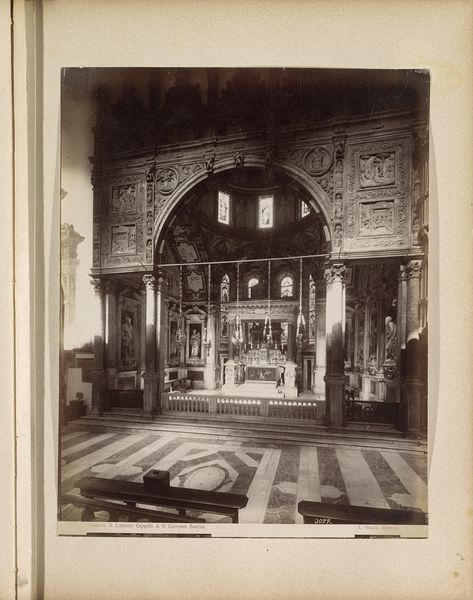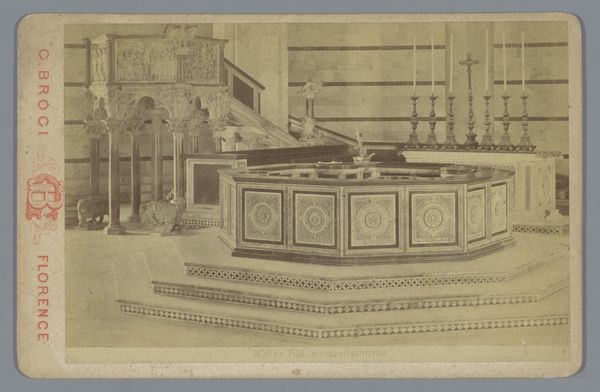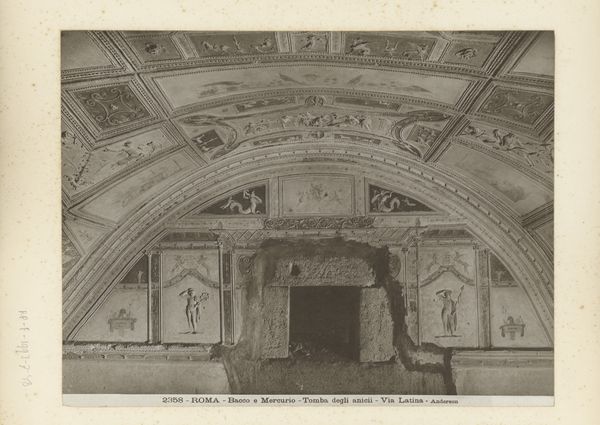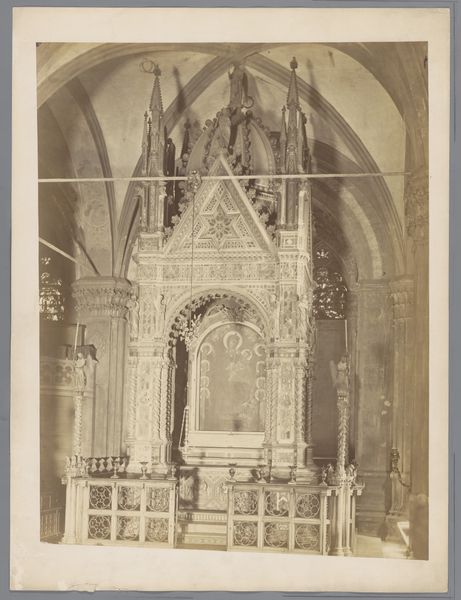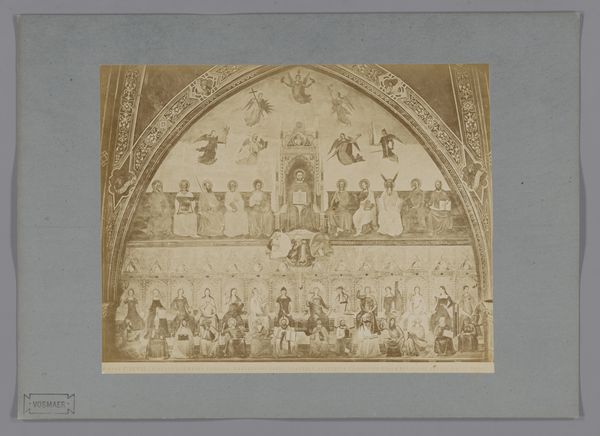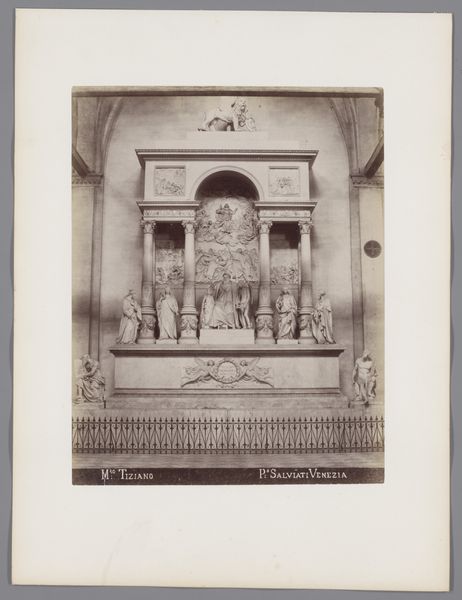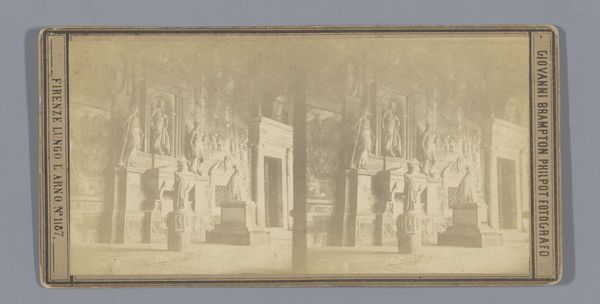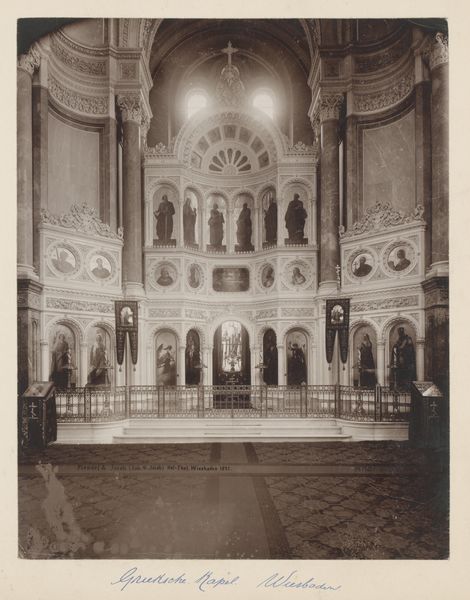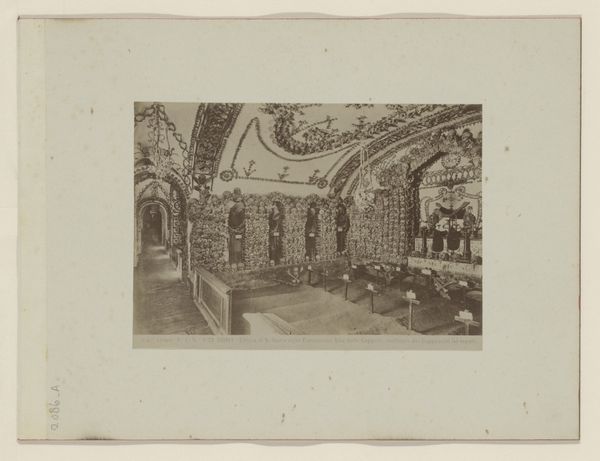
Mozaïeken in de Sint-Paulus buiten de Muren te Rome, Italië 1852 - 1900
0:00
0:00
mosaic, print, photography
#
mosaic
# print
#
landscape
#
photography
#
romanesque
#
statue
Dimensions: height 197 mm, width 249 mm, height 254 mm, width 354 mm
Copyright: Rijks Museum: Open Domain
Curator: This remarkable photograph, held at the Rijksmuseum, is by Fratelli Alinari and it documents the mosaics in the Basilica of Saint Paul Outside the Walls in Rome. The print was created sometime between 1852 and 1900. Editor: My first impression is one of overwhelming devotion—the composition guides my eyes upward, past the classical architectural features and toward that glorious host above. It's quite impressive, even in this muted photographic form. Curator: Yes, the iconography is extremely dense and it emphasizes a hierarchy. The upper register features Christ Pantocrator surrounded by angels, with lines of saints proceeding from there—visual expressions of divine order and intercession. The photographer, or perhaps the mosaic artists before him, certainly understood that. Editor: It does reflect an attempt to create order in society; who is allowed to be a decision maker versus those not; and whose voice is not included. How do we connect with these holy figures portrayed on this heavenly plane when society still faces very unheavenly experiences and oppressions today? I can see an activist or protester drawing from this symbolism of solidarity. Curator: That’s an interesting counterpoint! What I find captivating, though, is how Romanesque art aimed to render the celestial realm accessible and comprehensible. It's like a visualized communal memory where each symbol speaks to a deep well of religious meaning, designed to trigger reverence and guide ethical behavior in the earthly sphere. Editor: And whose ethics are we following? It also serves to solidify the power structures of the time. It's always crucial to reflect critically on the social dynamics inherent within such deeply religious artworks and how they are perceived now, for what has stayed and what has been forgotten or rejected. Curator: True. Thank you for highlighting those tensions that still affect people today; reflecting on it helps us to not let those harmful elements go unacknowledged as time goes by. Editor: Indeed. And considering how photography helped disseminate such imagery, impacting not just worshippers but also broader cultural understandings of power.
Comments
No comments
Be the first to comment and join the conversation on the ultimate creative platform.

